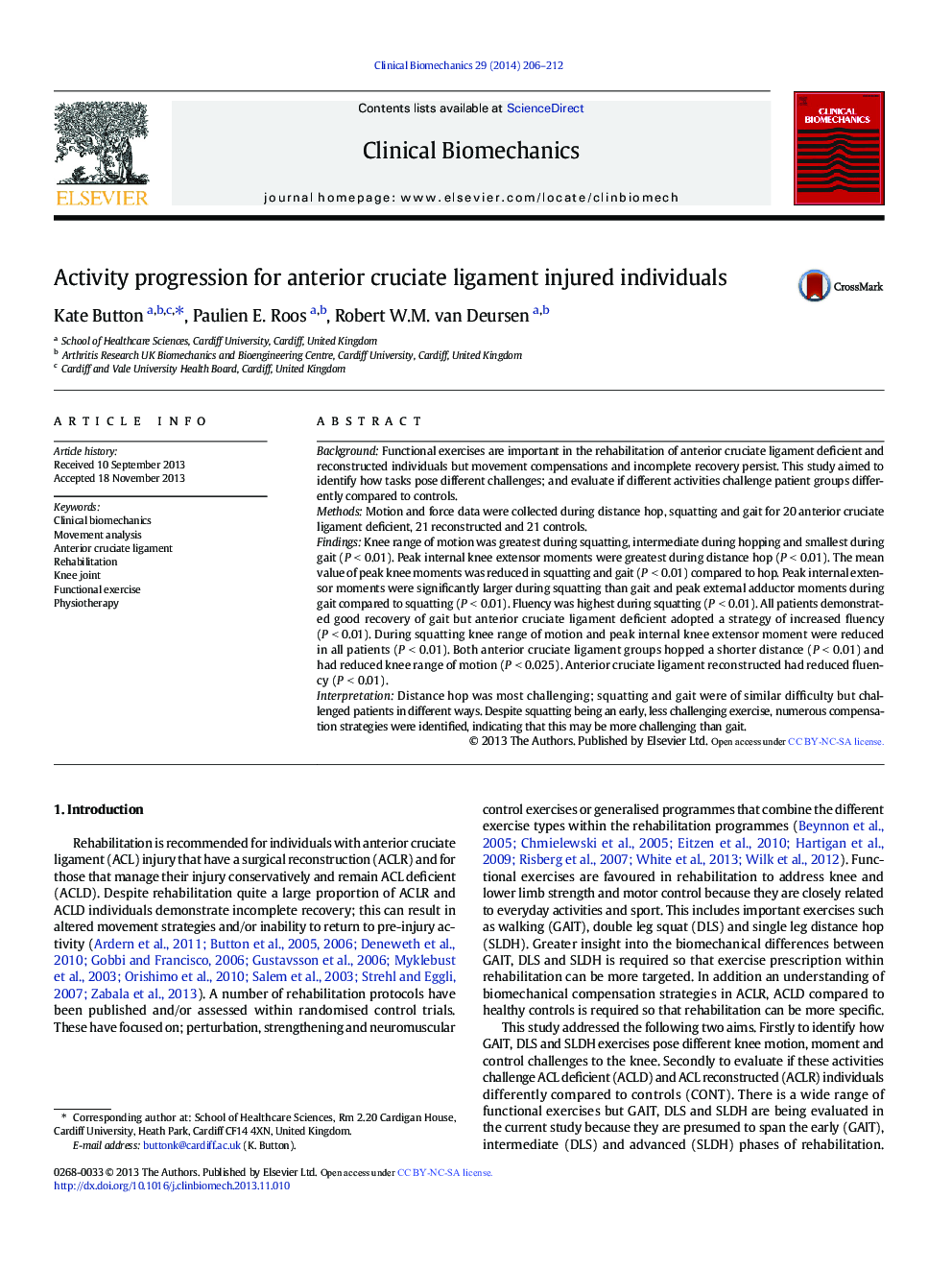| کد مقاله | کد نشریه | سال انتشار | مقاله انگلیسی | نسخه تمام متن |
|---|---|---|---|---|
| 6205029 | 1264936 | 2014 | 7 صفحه PDF | دانلود رایگان |
BackgroundFunctional exercises are important in the rehabilitation of anterior cruciate ligament deficient and reconstructed individuals but movement compensations and incomplete recovery persist. This study aimed to identify how tasks pose different challenges; and evaluate if different activities challenge patient groups differently compared to controls.MethodsMotion and force data were collected during distance hop, squatting and gait for 20 anterior cruciate ligament deficient, 21 reconstructed and 21 controls.FindingsKnee range of motion was greatest during squatting, intermediate during hopping and smallest during gait (PÂ <Â 0.01). Peak internal knee extensor moments were greatest during distance hop (PÂ <Â 0.01). The mean value of peak knee moments was reduced in squatting and gait (PÂ <Â 0.01) compared to hop. Peak internal extensor moments were significantly larger during squatting than gait and peak external adductor moments during gait compared to squatting (PÂ <Â 0.01). Fluency was highest during squatting (PÂ <Â 0.01). All patients demonstrated good recovery of gait but anterior cruciate ligament deficient adopted a strategy of increased fluency (PÂ <Â 0.01). During squatting knee range of motion and peak internal knee extensor moment were reduced in all patients (PÂ <Â 0.01). Both anterior cruciate ligament groups hopped a shorter distance (PÂ <Â 0.01) and had reduced knee range of motion (PÂ <Â 0.025). Anterior cruciate ligament reconstructed had reduced fluency (PÂ <Â 0.01).InterpretationDistance hop was most challenging; squatting and gait were of similar difficulty but challenged patients in different ways. Despite squatting being an early, less challenging exercise, numerous compensation strategies were identified, indicating that this may be more challenging than gait.
Journal: Clinical Biomechanics - Volume 29, Issue 2, February 2014, Pages 206-212
